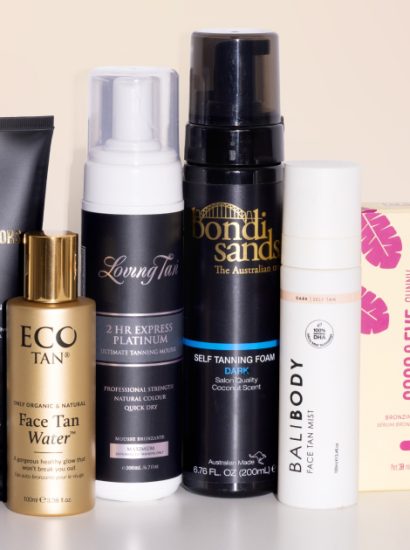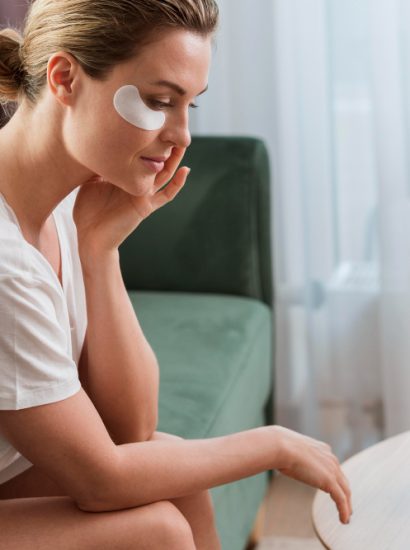As parents, we want to give our children the best start in life, and that includes teaching them healthy skin habits that will last a lifetime. While we often focus on nutrition, education, and physical activity, skincare is another important area that can sometimes be overlooked. Children’s skin is sensitive and delicate, requiring special attention to keep it healthy and protect it from potential damage. Building healthy skincare habit early on not only safeguards their skin but also sets the foundation for a lifetime of proper skincare routines.
Understanding Kids’ Skin
Children’s skin is quite different from that of adults. It is thinner, more delicate, and more prone to irritation and dryness. Understanding the unique characteristics of kids’ skin is the first step in establishing a proper skincare routine.
Delicate Skin Barrier
A child’s skin barrier is still developing, making it more vulnerable to environmental factors such as pollution, UV rays, and harsh chemicals found in certain skincare products. This fragile barrier can be easily compromised, leading to conditions like eczema, dermatitis, and other forms of irritation.
Higher Moisture Levels
While kids’ skin can retain moisture better than adult skin, it can still lose hydration quickly due to environmental factors, such as dry air or excessive exposure to the sun. This makes moisturizing an essential part of their skincare routine.
Less Oil Production
Children’s skin produces less oil compared to adults, which means they are less likely to suffer from acne at an early age. However, this also means their skin can dry out faster and needs proper care to maintain moisture balance.
Skincare Essentials for Kids
To build healthy skin habits, parents should create a simple, manageable routine for their children that promotes consistency. Here are the essential steps and tips for a kid-friendly skincare routine:
Cleansing: Keeping Skin Fresh and Clean
The foundation of any good skincare routine is cleansing. Kids are active and tend to get dirty, whether they’re playing outside, attending school, or engaging in sports. Regular cleansing helps remove dirt, sweat, and pollutants from the skin.
Gentle Cleansers:
Choose a mild, soap-free cleanser that won’t strip the skin of its natural oils. Harsh soaps or cleansers with strong fragrances can irritate delicate skin.
Frequency:
Cleansing should be done once a day, preferably at night, to remove the day’s buildup of dirt and sweat.
Bath Time:
For young kids, bath time is an excellent opportunity to teach the importance of cleaning their skin. Use lukewarm water and avoid hot water, which can dry out their skin.
Moisturizing: Locking in Hydration
Moisturizing is critical to maintaining the skin’s natural moisture barrier. Children’s skin can lose moisture quickly, especially in dry or cold climates, so replenishing hydration is key.
Choose a Mild Moisturizer:
Look for fragrance-free and hypoallergenic moisturizers, preferably those containing natural ingredients like shea butter, aloe vera, or oatmeal.
Application:
Encourage kids to apply moisturizer right after a bath or shower, when their skin is still slightly damp. This helps lock in moisture.
Focus on Problem Areas:
Areas like the hands, knees, and elbows can be prone to dryness, so pay extra attention to these spots.
Sun Protection: Guarding Against UV Damage
Sun protection is one of the most important aspects of skincare for kids. Overexposure to the sun’s UV rays can cause long-term skin damage, including sunburns, premature aging, and even skin cancer.
Broad-Spectrum Sunscreen:
Use a broad-spectrum sunscreen with SPF 30 or higher. Make sure it’s water-resistant and suitable for children. Mineral-based sunscreens with zinc oxide or titanium dioxide are excellent choices for sensitive skin.
Daily Application:
Even on cloudy days, UV rays can penetrate the skin, so apply sunscreen to exposed areas every morning. Reapply every two hours if your child is outdoors for an extended period or after swimming.
Cover Up:
In addition to sunscreen, dress your child in protective clothing, such as wide-brimmed hats and long sleeves, to further shield them from the sun.
Hydration: Skin Health from the Inside Out
Healthy skin starts from within, and hydration plays a significant role. Make sure your child drinks plenty of water throughout the day, especially during hot weather or after physical activities. Hydration helps keep their skin soft, smooth, and less prone to dryness.
Water-Rich Foods:
In addition to water, offer fruits and vegetables high in water content, such as cucumbers, oranges, and watermelon.
Preventing Common Skin Conditions
Kids can encounter a variety of skin issues, such as eczema, rashes, or insect bites. Preventing and managing these conditions helps ensure their skin stays healthy.
Eczema:
Eczema is a common skin condition in children characterized by dry, itchy patches. Keeping the skin moisturized and avoiding harsh products can help prevent flare-ups.
Insect Bites:
Use insect repellent when necessary and teach children not to scratch bites, as this can cause infections or scars.
Minor Cuts and Scrapes:
Clean cuts and scrapes gently with soap and water and apply a gentle, child-friendly antibiotic ointment if necessary.
Making Skincare Fun and Educational
Introducing skincare to children can be a fun and educational experience. Here are some tips to help make it enjoyable for them:
Lead by Example:
Kids learn by observing, so show them your skincare routine and explain why it’s important. Let them see you cleanse, moisturize, and apply sunscreen.
Skincare Games:
Turn skincare into a game. For example, let them be the “cleaning captain” who makes sure everyone washes their face, or reward them with stickers for completing their skincare tasks.
Storytime:
Create a fun story about skincare, perhaps about a superhero who needs to keep their skin healthy to maintain their powers.
Building a Routine Based on Age
Toddlers (Ages 1-3)
At this age, it’s all about keeping the routine simple and fun. Focus on basic hygiene, such as regular baths and applying lotion after washing. A gentle body wash and mild moisturizer are usually sufficient.
Preschoolers (Ages 4-6)
As children become more independent, you can teach them simple habits like washing their hands and face properly. Introduce sunscreen and explain why it’s important before outdoor activities. You can also let them apply their own lotion to start building a routine.
Elementary Age (Ages 7-10)
Children at this age can take on more responsibility for their skincare. They can start using a facial cleanser and apply moisturizer by themselves. Sunscreen use should become a daily habit, and you can explain more about the benefits of hydration and protecting their skin from the sun.
Preteens (Ages 11-12)
Preteens may start experiencing early signs of puberty, which can include minor breakouts. Teach them about proper cleansing and introduce gentle, non-drying cleansers that are appropriate for their age. Moisturizing and sunscreen should continue to be a daily part of their routine.
Conclusion
Teaching kids the importance of skincare early in life builds healthy habits that can benefit them throughout their lifetime. By understanding their skin’s unique needs and introducing simple, fun routines, parents can help ensure their children develop a positive relationship with skincare. From gentle cleansing and moisturizing to sun protection and hydration, these essential steps will safeguard their skin’s health and set the foundation for glowing, resilient skin.
FAQs
At what age should I start a skincare routine for my child?
You can start incorporating basic skincare habits, like cleansing and moisturizing, as early as toddlerhood. The routine can evolve as your child grows, but sun protection and moisturizing are important from an early age.
How can I protect my child’s skin from the sun?
Use a broad-spectrum sunscreen with SPF 30 or higher and reapply every two hours when outdoors. Also, dress your child in protective clothing and encourage them to wear hats and sunglasses.
What are the best ingredients for kids’ skincare products?
Look for products with natural and hypoallergenic ingredients like aloe vera, shea butter, oatmeal, and glycerin. Avoid harsh chemicals, fragrances, and dyes that can irritate their delicate skin.
Should my child use the same skincare products as adults?
No, children’s skin is more sensitive and requires milder products. Always choose skincare products specifically designed for children to ensure they are gentle and safe.
How can I prevent my child’s skin from becoming dry?
Ensure they are using a gentle cleanser, applying a moisturizer daily, and staying hydrated by drinking plenty of water. Avoid long, hot baths, which can strip the skin of its natural oils.
Can I use baby products on my older child?
Baby products are typically designed for extremely delicate skin, so they can still be used on older children if they have sensitive skin. However, as they grow, you may need to switch to products more suited to their age group, especially if they start experiencing skin changes like acne.
Also read: Hair Gel: 10 Best Products for a Strong Hold and Shine





